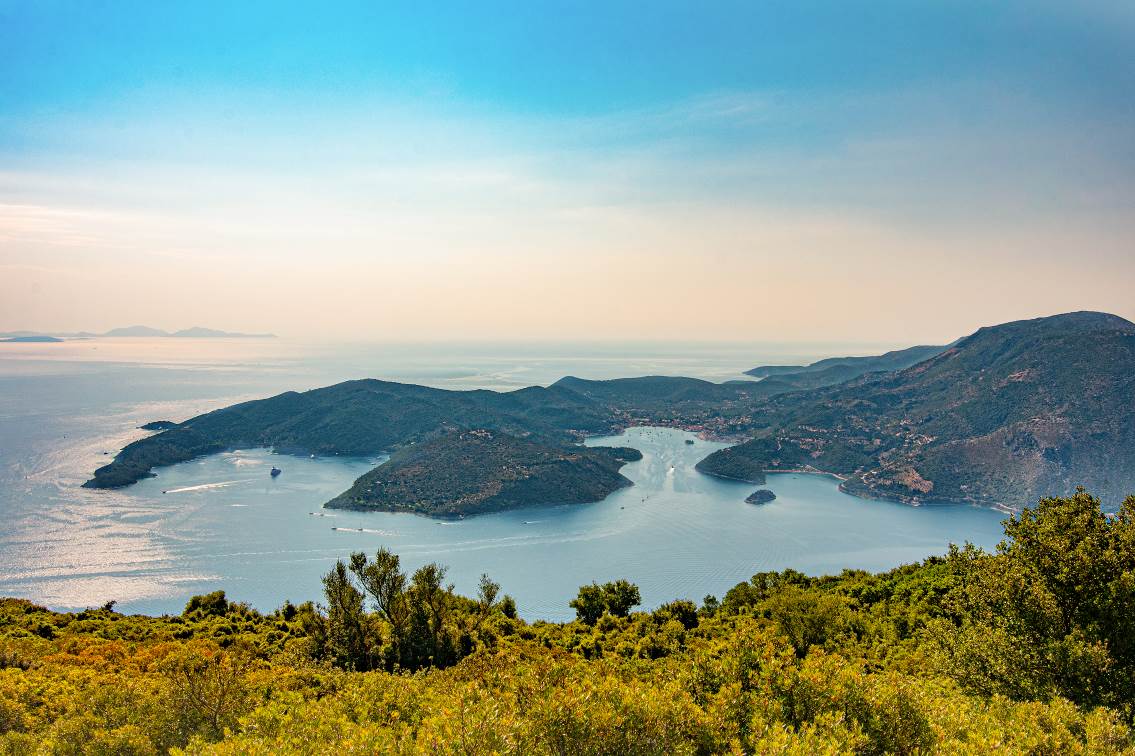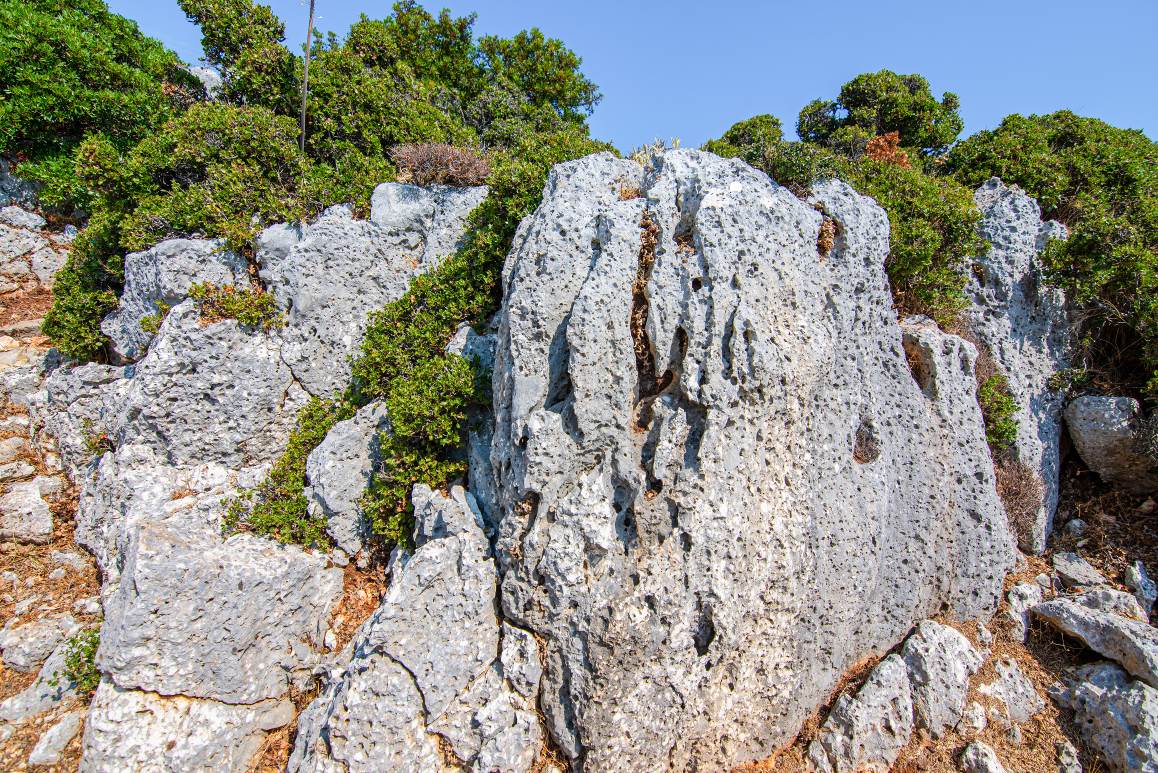
Kefalonia and Ithaca constitute the westernmost part of the External Hellenides. They are located close to the Greek arc, which is the most tectonically active region in Europe.
Due to its geotectonic position, Ithaca constitutes an island with intense seismic activity and rich geomorphology. Another characteristic of the island is that most of its surface is covered by limestones. This fact in combination with the tectonic activity, the climatic conditions and the processes of erosion and deposition results in the appearance of numerous underground and surface geomorphs such as caves with rich stalactite and stalagmite decoration, caverns, forms of surface erosion etc.

The intense geomorphology of the island is mainly depending on the eustatic movements that took place during the Quaternary (the last 2.5 My). Specifically, during the Quaternary successive alternations of cold and warm periods (glacial and interglacial periods respectively) are observed.
As a result of these eustatic movements is the intense vertical erosion due to the action of water during the glacial periods, which forms characteristic geological geomorphs, such as the "fjord" type valleys. These valleys during the interglacial periods, due to sea level rise, were flooded, forming long and narrow bays like the characteristic bays on the island of Ithaca.
Geologically, the island of Ithaca is built almost exclusively by the Ionian zone of the External Hellenides, and mainly by the Ionian carbonate sequence deposited from the Triassic (251.9-201.3 My) to the Eocene (56.0-33.9 My), period.
Specifically, the oldest formations of the Ionian zone are the Triassic "breccia". It is a mixture of brecciated limestones, dolomites and gypsum. Above them develops a carbonate sequence of U. Triassic (237-201.3 My) – M. Lias (190.8-1827 My), which includes massive light-colored thick-bedded limestones with fossil algae, and limestones with cherts on the top, of the "Pantocratoras formation". This formation occupies the largest part of the area in relation to the other formations of the Ionian zone. The U. Lias (182.7-174.1 My)Ammonitico Rosso formation follows, consisting of alternating layers of red colored medium bedded to thin bedded limestones with thin marl and chert intercalations. Then limestones with cherts and also Dogger (174,1-163,5 My)clay schists are found. The U. Jurassic-L. Cretaceous (163.5-100.5 My) formations are represented by well-bedded pelagic limestones, which alternate with chert layers.

The U. Cretaceous (100.5-66 My) respectively is represented by massive rudist bearing thick bedded limestones. The sequence continues with the Paleocene (66.0-56.0 My) formation, which consists of thin-bedded brecciated limestones, followed by the Eocene (56.0-33.9 My), which is represented by unbedded nummulite bearing- clastic (marly) limestones. The Ionian zone on Ithaca is completed with the Oligocene-M. Miocene flysh (33.9-13.82 My).The geological structure of Kefalonia and Ithaca is completed with the post-Alpine orogeny formation which consists of Pliocene (5.333-2.58 My) marls, as well as of Quaternary (2,588 My until now) marine sediments and terrestrial formations.